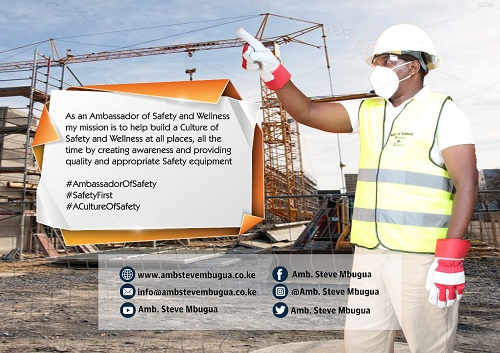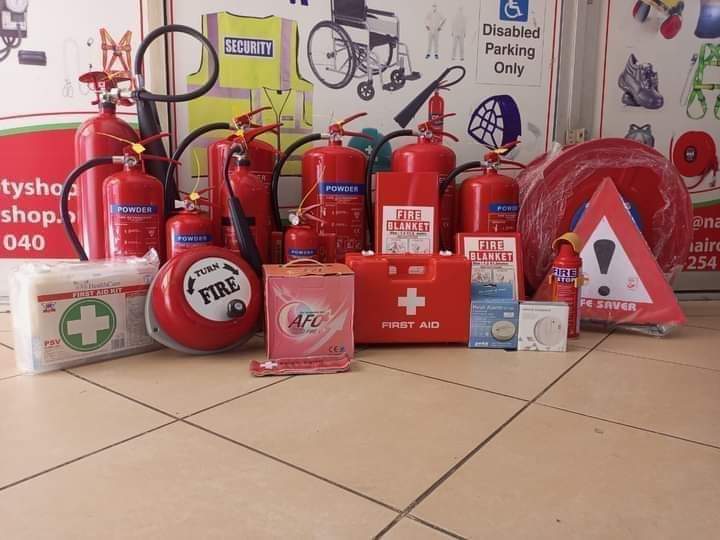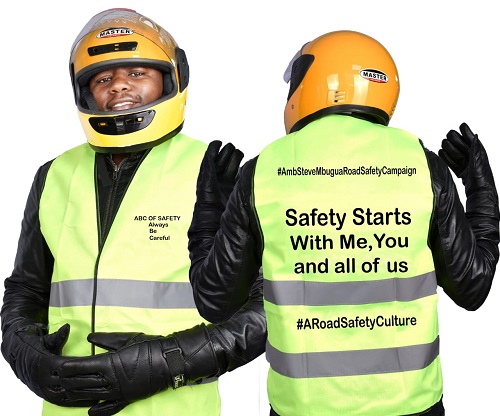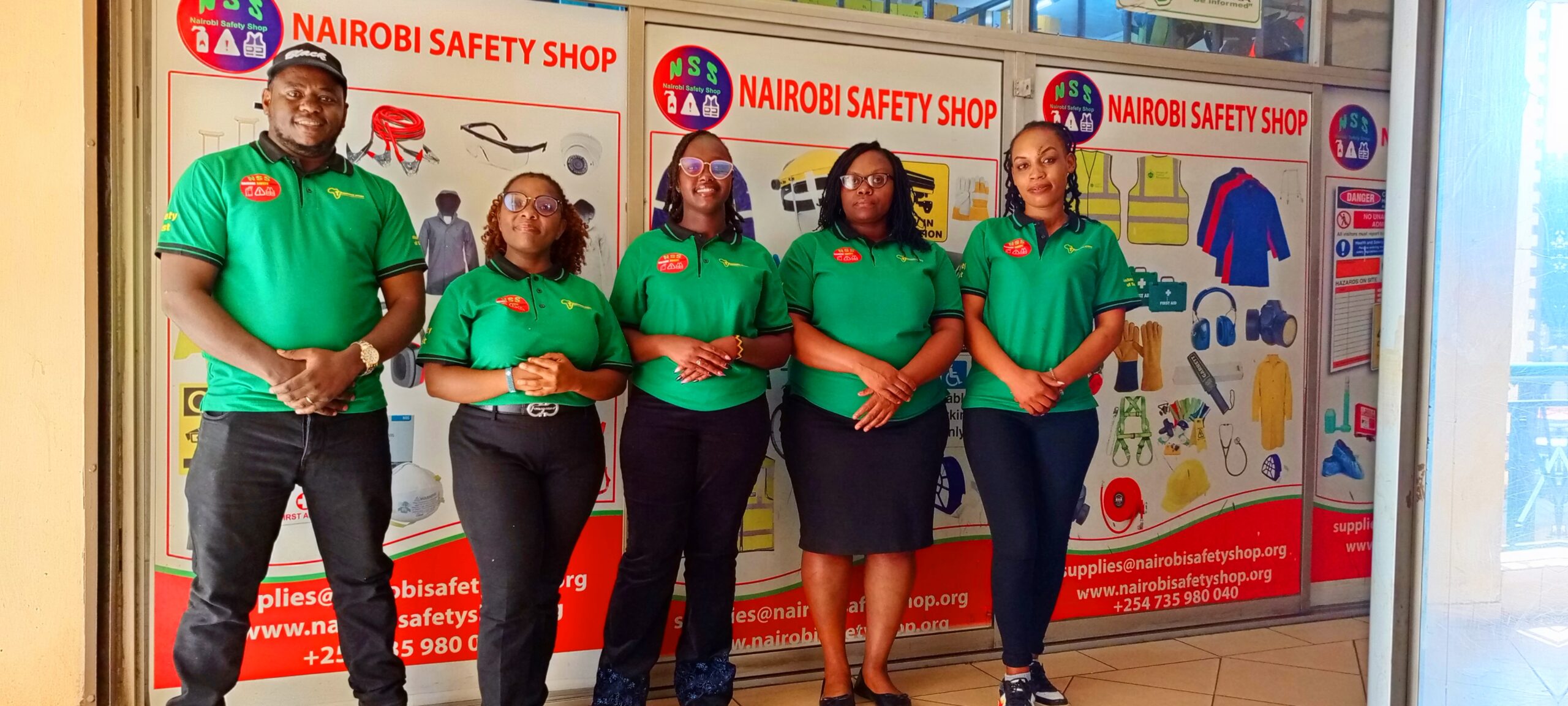In today’s dynamic work environments, maintaining high standards of safety and health is essential. As Ambassador Steve Mbugua, the globally recognized Ambassador of Safety, I am excited to introduce our comprehensive Occupational Health and Safety Training Course. With a mission to build a robust culture of safety, this course is designed to equip individuals and organizations with the knowledge and skills needed to create a secure and compliant workplace.
Drawing on years of experience and a deep understanding of global safety standards, I have developed this training program to address the diverse challenges faced in various industries. Our course covers essential topics such as risk management, regulatory compliance, emergency preparedness, and health promotion. By integrating practical exercises, real-world case studies, and interactive content, we ensure that participants not only learn but also apply safety principles effectively.
Health and safety are critical aspects of any organization, ensuring the well-being of employees, clients, and the general public. The foundations of health and safety encompass a variety of principles, practices, and regulations aimed at preventing accidents, injuries, and illnesses in the workplace. Below, we explore these foundations in detail, providing examples and explanations to elucidate their importance and application.
1. Legal and Regulatory Framework
Explanation: The legal and regulatory framework provides the foundation for health and safety practices. Governments and international organizations establish laws and standards that organizations must follow to ensure a safe working environment.
Examples:
• Occupational Safety and Health Administration (OSHA) in the United States sets and enforces standards to ensure safe and healthful working conditions.
• European Agency for Safety and Health at Work (EU-OSHA) develops regulations and guidelines for member states to protect workers.
• Occupational Safety and Health Act (OSHA) in the Kenya sets and enforces standards, guidelines and regulations to ensure safe and healthful working conditions.
Key Elements:
• Compliance with national and international health and safety laws.
• Regular updates to policies to reflect changes in legislation.
• Understanding of industry-specific regulations.
2. Risk Assessment and Management
Explanation: Risk assessment involves identifying potential hazards in the workplace, evaluating the risks associated with these hazards, and implementing measures to control or eliminate them. It is a proactive approach to prevent accidents and injuries.
Examples:
• Hazard Identification: Identifying potential hazards such as chemical spills, machinery malfunctions, or ergonomic risks.
• Risk Evaluation: Assessing the likelihood and severity of harm from identified hazards.
• Control Measures: Implementing safety measures such as protective equipment, safety protocols, and training programs.
Key Elements:
• Systematic identification of hazards.
• Evaluation of risks and determination of control measures.
• Regular review and update of risk assessments.
3. Safety Culture and Leadership
Explanation: A strong safety culture is integral to the effectiveness of health and safety programs. Leadership plays a crucial role in fostering a culture where safety is prioritized and integrated into everyday operations.
Examples:
• Management Commitment: Leaders demonstrate their commitment to safety through actions and resource allocation.
• Employee Involvement: Encouraging employees to participate in safety programs and decision-making processes.
• Continuous Improvement: Regularly reviewing and improving safety practices.
Key Elements:
• Visible and active leadership commitment.
• Engagement and empowerment of employees.
• Continuous monitoring and improvement of safety practices.
4. Health and Safety Training and Education
Explanation: Training and education are essential to ensure that employees understand health and safety risks and know how to perform their tasks safely. Ongoing training keeps safety knowledge up to date.
Examples:
• Induction Training: Providing new employees with initial safety training upon joining the organization.
• Ongoing Training: Regularly scheduled training sessions on specific safety topics, such as fire safety, first aid, and ergonomics.
• Specialized Training: Training for specific roles, such as operating heavy machinery or handling hazardous materials.
Key Elements:
• Comprehensive induction and ongoing training programs.
• Training tailored to specific job roles and risks.
• Regular evaluation of training effectiveness.
5. Workplace Safety Procedures and Protocols
Explanation: Establishing clear safety procedures and protocols helps ensure that employees know how to perform their tasks safely and respond appropriately in case of emergencies.
Examples:
• Emergency Procedures: Clear protocols for evacuations, fire drills, and medical emergencies.
• Standard Operating Procedures (SOPs): Detailed instructions on how to safely perform tasks and use equipment.
• Incident Reporting: Systems for reporting and investigating accidents, near misses, and hazards.
Key Elements:
• Well-documented and accessible safety procedures.
• Regular drills and practice of emergency protocols.
• Robust incident reporting and investigation processes.
6. Health and Safety Monitoring and Evaluation
Explanation: Monitoring and evaluating health and safety performance are crucial for identifying areas of improvement and ensuring compliance with safety standards.
Examples:
• Safety Inspections: Regular inspections of the workplace to identify hazards and ensure compliance with safety protocols.
• Performance Metrics: Tracking key performance indicators (KPIs) such as incident rates, safety training completion, and audit results.
• Feedback Mechanisms: Systems for employees to provide feedback on safety practices and suggest improvements.
Key Elements:
• Regular and thorough safety inspections.
• Use of performance metrics to evaluate safety.
• Active feedback and continuous improvement mechanisms.
7. Employee Health and Well-being
Explanation: Promoting employee health and well-being goes beyond preventing injuries and includes fostering a supportive and healthy work environment.
Examples:
• Wellness Programs: Initiatives such as fitness programs, mental health support, and healthy eating options.
• Ergonomics: Ensuring workstations are designed to reduce strain and injury.
• Health Screenings: Regular health check-ups and screenings for employees.
Key Elements:
• Comprehensive wellness programs.
• Ergonomic assessments and adjustments.
• Regular health screenings and support services.
Examples and Explanations in Practice
1. Manufacturing Industry Example:
o Risk Assessment: Identifying hazards such as moving machinery, chemical exposure, and noise.
o Control Measures: Installing safety guards, providing personal protective equipment (PPE), and implementing hearing conservation programs.
o Training: Regular safety training sessions on machinery operation and emergency procedures.
o Monitoring: Conducting safety audits and using KPIs like incident rates and PPE compliance.
2. Healthcare Industry Example:
o Risk Assessment: Identifying hazards such as exposure to infectious diseases, needle stick injuries, and patient handling risks.
o Control Measures: Using safety-engineered devices, providing infection control training, and implementing safe patient handling programs.
o Training: Ongoing education on infection control, PPE usage, and emergency response.
o Monitoring: Tracking incidents of needle stick injuries and healthcare-associated infections, conducting regular safety inspections.
3. Office Environment Example:
o Risk Assessment: Identifying hazards such as ergonomic risks, slip and fall hazards, and electrical safety issues.
o Control Measures: Providing ergonomic workstations, maintaining clear walkways, and ensuring electrical equipment is regularly inspected.
o Training: Conducting training on ergonomic best practices, emergency evacuation procedures, and general office safety.
o Monitoring: Performing regular ergonomic assessments, tracking incident reports, and reviewing safety protocols periodically.
The foundations of health and safety are integral to creating a safe and healthy working environment. By understanding and implementing legal frameworks, risk assessments, strong safety cultures, comprehensive training, clear procedures, monitoring systems, and wellness programs, organizations can significantly reduce the risk of accidents and injuries. My extensive experience and dedication to safety as an Ambassador Of safety exemplify the positive impact that effective health and safety practices can have on both individuals and organizations.
In conclusion, safety training is a critical component of fostering a secure and prepared environment. Ambassador Steve Mbugua, as a renowned safety ambassador and trainer, emphasizes the importance of continuous learning and awareness. You can reach him via Whatsapp +254724036078, Email info@ambstevembugua.co.ke, Social Media Platforms as Amb Steve Mbugua, books and blogs on www.ambstevembugua.co.ke Through his comprehensive training sessions, seminars, and workshops, he empowers individuals and organizations to adopt a proactive approach to safety. By prioritizing safety education, we can build a culture of safety that protects lives and enhances overall well-being.
READ MORE
Largest Safety Company
Safety Culture Video
Conducting Safety Training, Seminars and Workshops
Building A Culture Of Safety



















